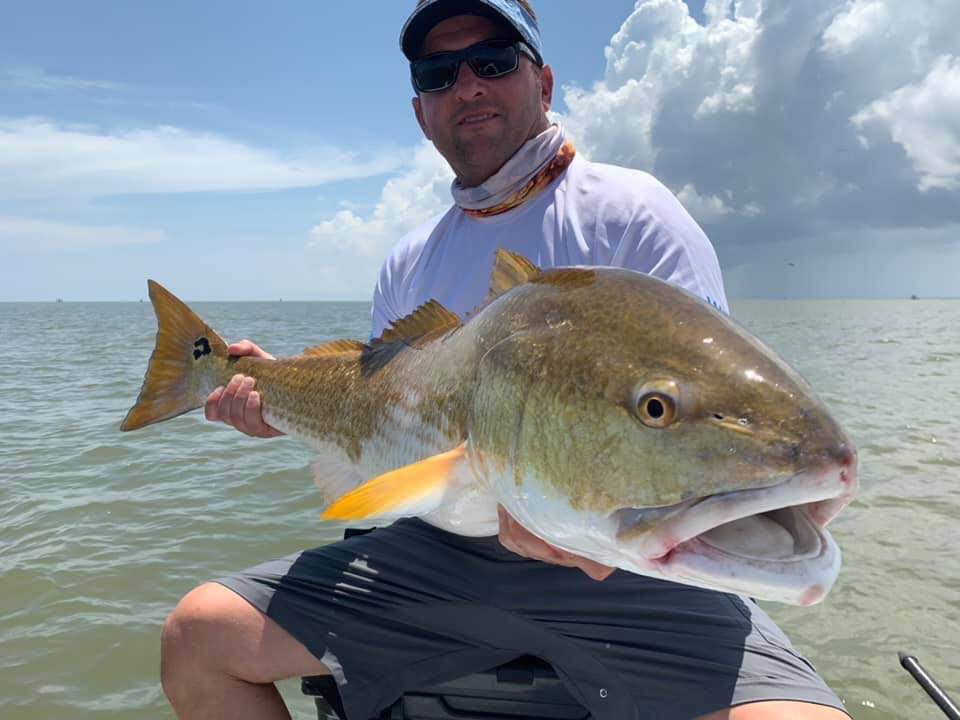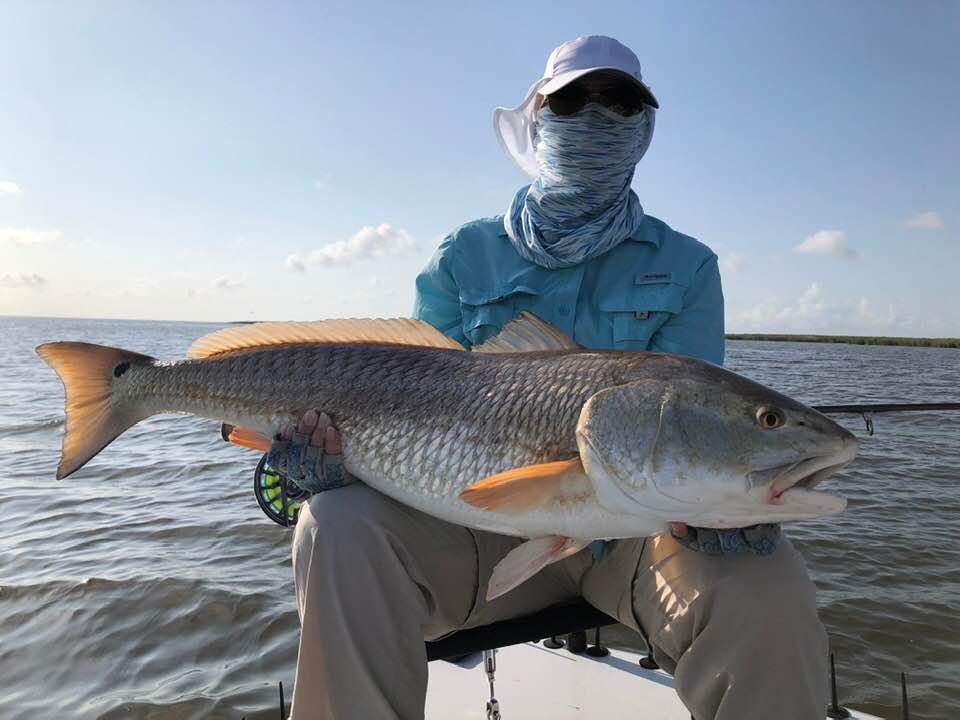If you follow me on Instagram and/or Facebook, you already know I am extremely passionate about snook fishing.
It's long, slender silhouette, gaping jaw and upward focal arrangement make it one of the most compelling targets a fly caster could ever endeavor to catch!
It's not their rarity, beautiful fluorescent colors or existence in exotic locales that makes them so unique. Heck, you can catch a snook in a road-side canal or under nearly every pier, dock or bridge on either of Florida's coasts south of Lake Okeechobee.
In the right conditions, they'll eat just about anything even the most indiscriminate angler can conceive of casting, soaking or dragging through just about every graduation of the water column.
BUT... When you set out to capture a real, live, bonafide trophy snook on fly rod, you will have undertaken one of the greatest challenges a fly fisherman can accept!
We all know that getting fly fishermen to agree on which species truly represents the ultimate catch may be as difficult as getting them to agree on the best pizza toppings or IPA.
However, ask any angler who has spent more than a minute chasing the elusive linesider in it's most suitable habitat (The Everglades) which quarry has eluded him most and I am willing to bet a free day of fishing that 9 out of 10 will admit that it's the monster snook that has left the deepest scars and created the most emotional baggage when asked to recall their most memorable encounters with their quarries.
Perhaps its the almost contradictory juxtaposition of the snook's willingness to eat a giant piece of plastic one day and then refuse even the smallest, most intricately hand-tied fly the next that makes them so difficult to reconcile.
Maybe it's heir ability to confound even the most seasoned guide day in and day out that makes them so impossible to forsake.
Whichever it is, I guarantee there are a ten-fold more 20-pound permit, 100-plus pound tarpon and 10-pound bonefish caught around the world every month than there are legitimate 20-pound snook taken on fly in a year!!!
That's what makes them so special and that's what make s what I do every day so interesting!!
As many clients often do ... If you were to ask me what is the best time of year to fly fish for snook, with few exceptions, I will almost invariably answer ... Winter.
To the experienced angler that might seem counter-intuitive. After all, the snook is a sub-tropical fish that is highly susceptible to extreme temperature changes and fluctuating barometric conditions.
All true.
However, unlike most other times of the year when snook are comfortable across a wide range of habitats, winter most often finds them in or near the shallowest waters found in their respective ecosystems.
Why?
The answer is simple.
Warmth and food.
Not unlike many other species of game fish around the world, snook tend to relate to shallow water during the winter months because the shallower the water, the more drastically it is affected by changes in temperature, and somewhat uniquely, south Florida, and more specifically,The Everglades offers snook the unique proximity of deep, or relatively deep, water and fertile shallow waters that warm quickly under the radiant heat of the winter sun!
Like the hundreds of thousands of mammals, otherwise classified as humans, who travel to Florida from all over the northern hemisphere every winter, snook can be found in similar places based on very clear climate changes and weather patterns.
When it's cold, we humans may be a bit reluctant to climb out from under that fluffy down comforter to get that cup of morning joe or prepare that bowl of piping hot oatmeal, but add a little heat, be it HVAC or a dose of that beautiful Florida sunshine, and suddenly we're ready to fill the tank with those ever so beneficial nutrients to get us through the day!!
Draw whatever conclusions you may about the similarities between snook and "snowbirds," but if you take the time to observe the nature of nearly every living thing, you will notice very predictable behavior patterns.
Without divulging too many secrets of the hunt, (Hahaha) I will simply reiterate that winter really is the best time of year to seek and find the trophy snook you may or may not have been waiting your entire life to catch!!
While it can be difficult to predict who will be among the lucky handful of anglers to encounter a truly giant snook every year, I can guarantee only one thing ... you have to be there in order to seize the opportunity!!
It's long, slender silhouette, gaping jaw and upward focal arrangement make it one of the most compelling targets a fly caster could ever endeavor to catch!
It's not their rarity, beautiful fluorescent colors or existence in exotic locales that makes them so unique. Heck, you can catch a snook in a road-side canal or under nearly every pier, dock or bridge on either of Florida's coasts south of Lake Okeechobee.
In the right conditions, they'll eat just about anything even the most indiscriminate angler can conceive of casting, soaking or dragging through just about every graduation of the water column.
BUT... When you set out to capture a real, live, bonafide trophy snook on fly rod, you will have undertaken one of the greatest challenges a fly fisherman can accept!
We all know that getting fly fishermen to agree on which species truly represents the ultimate catch may be as difficult as getting them to agree on the best pizza toppings or IPA.
However, ask any angler who has spent more than a minute chasing the elusive linesider in it's most suitable habitat (The Everglades) which quarry has eluded him most and I am willing to bet a free day of fishing that 9 out of 10 will admit that it's the monster snook that has left the deepest scars and created the most emotional baggage when asked to recall their most memorable encounters with their quarries.
Perhaps its the almost contradictory juxtaposition of the snook's willingness to eat a giant piece of plastic one day and then refuse even the smallest, most intricately hand-tied fly the next that makes them so difficult to reconcile.
Maybe it's heir ability to confound even the most seasoned guide day in and day out that makes them so impossible to forsake.
Whichever it is, I guarantee there are a ten-fold more 20-pound permit, 100-plus pound tarpon and 10-pound bonefish caught around the world every month than there are legitimate 20-pound snook taken on fly in a year!!!
That's what makes them so special and that's what make s what I do every day so interesting!!
As many clients often do ... If you were to ask me what is the best time of year to fly fish for snook, with few exceptions, I will almost invariably answer ... Winter.
To the experienced angler that might seem counter-intuitive. After all, the snook is a sub-tropical fish that is highly susceptible to extreme temperature changes and fluctuating barometric conditions.
All true.
However, unlike most other times of the year when snook are comfortable across a wide range of habitats, winter most often finds them in or near the shallowest waters found in their respective ecosystems.
Why?
The answer is simple.
Warmth and food.
Not unlike many other species of game fish around the world, snook tend to relate to shallow water during the winter months because the shallower the water, the more drastically it is affected by changes in temperature, and somewhat uniquely, south Florida, and more specifically,The Everglades offers snook the unique proximity of deep, or relatively deep, water and fertile shallow waters that warm quickly under the radiant heat of the winter sun!
Like the hundreds of thousands of mammals, otherwise classified as humans, who travel to Florida from all over the northern hemisphere every winter, snook can be found in similar places based on very clear climate changes and weather patterns.
When it's cold, we humans may be a bit reluctant to climb out from under that fluffy down comforter to get that cup of morning joe or prepare that bowl of piping hot oatmeal, but add a little heat, be it HVAC or a dose of that beautiful Florida sunshine, and suddenly we're ready to fill the tank with those ever so beneficial nutrients to get us through the day!!
Draw whatever conclusions you may about the similarities between snook and "snowbirds," but if you take the time to observe the nature of nearly every living thing, you will notice very predictable behavior patterns.
Without divulging too many secrets of the hunt, (Hahaha) I will simply reiterate that winter really is the best time of year to seek and find the trophy snook you may or may not have been waiting your entire life to catch!!
While it can be difficult to predict who will be among the lucky handful of anglers to encounter a truly giant snook every year, I can guarantee only one thing ... you have to be there in order to seize the opportunity!!











 RSS Feed
RSS Feed
